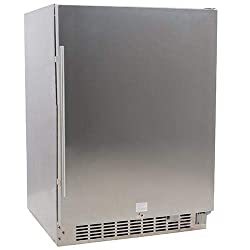Introduction:
Refrigerators have become an indispensable part of our daily lives, providing a convenient and efficient way to store and preserve food. With their evolution over time, advancements in technology, and impact on society, refrigerators have revolutionized the way we manage our food and lifestyle. In this article, we will explore the history, development, and various types of refrigerators, as well as their energy efficiency, impact, and disposal.
I. History
- Ancient origins: The use of evaporative and radiative cooling in ancient Iran
- Pre-electric refrigeration: Icehouses and iceboxes
- Artificial refrigeration: Scottish professor William Cullen’s refrigerating machine in 1755
- Vapor-compression refrigeration system: Invention by Jacob Perkins in 1834
- Commercialization and advancements: James Harrison, Edward Toussaint, and Carl von Linde
II. Technology Development
- Electric refrigerators: István Röck’s industrial ammonia refrigerator in 1894
- Residential refrigerators: Invention and production by Fred W. Wolf, Nathaniel B. Wales, and Alfred Mellowes
- Introduction of automatic controls and absorption refrigerator
III. Styles and Types of Refrigerators
- Evolution of design and colors
- Freezer units and their temperature ranges
- Different types: Compressor refrigerators, absorption refrigerators, Peltier effect refrigerators, and magnetic refrigerators
IV. Energy Efficiency
- Introduction of Energy Star ratings and regulations
- Impact of compressor efficiency and regular maintenance
- Detection of harmful leaks and monitoring refrigerant levels
V. Impact
- Supplantation of the Ice Trade and increased accessibility to refrigeration
- Effect on diet and lifestyle: Preservation of perishable food, bulk buying, and convenience
- Temperature zones and ratings for commercial refrigeration
- Disposal and environmental considerations
Here is a brief timeline of the invention of the refrigerator:
- 1805: Oliver Evans designs a blueprint for the first refrigeration machine.
- 1834: Jacob Perkins builds the first practical refrigerating machine.
- 1851: John Gorrie patents a compressed air refrigerator.
- 1876: Carl von Linde patents the process of liquefying gas.
- 1913: Fred W. Wolf invents the first self-contained electric refrigerator for home use.
- 1922: Baltzar von Platen and Carl Munters invent the absorption refrigerator.
- 1930: Albert Einstein and Leo Szilard patent a new type of refrigerator that uses methanol and water.
- 1940s: Refrigerators become more common in households.
- 1950s: Refrigerators are a common household appliance in most developed countries.
Today, refrigerators continue to evolve. New technologies are being developed to make refrigerators more efficient, environmentally friendly, and affordable. For example, some refrigerators now use solar energy to power their compressors. Others use smart technology to monitor food temperature and adjust settings accordingly.
The refrigerator has had a profound impact on our society. It has made it possible to store food safely for longer periods of time, which has led to better nutrition and health. It has also revolutionized the way we eat, allowing us to enjoy a wider variety of foods from all over the
FAQs:
- How do refrigerators work? Refrigerators use a heat pump system to transfer heat from the inside to the external environment, cooling the interior to a temperature below the room temperature.
- What are the different types of refrigerators available? There are compressor refrigerators, absorption refrigerators, Peltier effect refrigerators, and magnetic refrigerators, each utilizing different technologies for cooling.
- Are refrigerators energy efficient? With advancements in technology and the introduction of Energy Star ratings, modern refrigerators have become more energy-efficient. However, regular maintenance and monitoring are essential to maintain their efficiency.
- How did refrigerators impact our lifestyle? Refrigerators have made a significant impact on our lifestyle by allowing us to store perishable food for longer periods, buy in bulk, and enjoy the convenience of having food readily available.
- What are the temperature zones in commercial refrigeration? Commercial refrigeration includes different temperature zones for specific storage requirements, such as chilled, frozen, and ultra-low temperature zones, which vary depending on the products being stored.
In conclusion, refrigerators have come a long way in terms of technology, design, and efficiency. From their humble origins to their significant impact on our daily lives, refrigerators continue to play a vital role in food storage and preservation. With ongoing advancements, energy efficiency improvements, and environmental considerations, refrigerators will continue to evolve to meet the needs of modern society.







